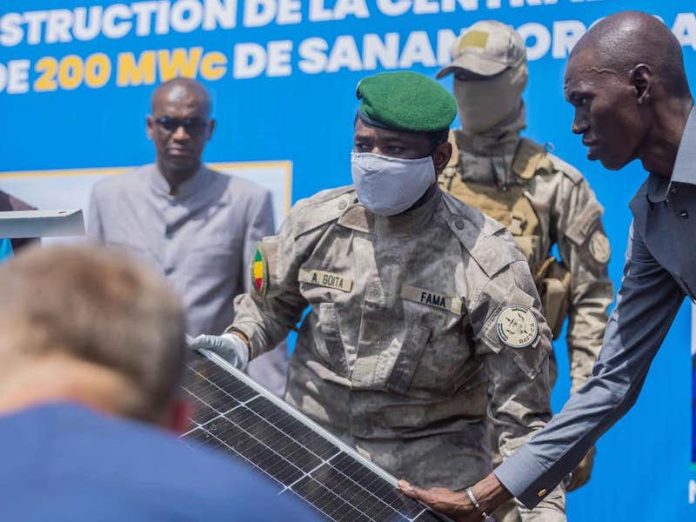
Construction has officially begun on a 200MW solar power plant in Mali, which is being built by Russian company Novawind, a subsidiary of Rosatom.
On Friday, the country's Transitional President, Colonel Assimi Goïta, installed the first solar panel for the project in Sanankoroba in the Koulikoro region.
It is about 30km from the capital Bamako.
According to state broadcaster, Office de Radio et Television du Mali (ORTM) the solar plant will cost more than €200 million (around $217.2m).
Construction is expected to take 12 months.
Novawind Director General, Gregory Nazarov, said the project will only use Russian-made equipment.
Mali Minister for Energy and Water, Bintou Camara, said the solar plant will be located on 300 hectares of land.
It will include solar PV modules that will be installed on tracker systems and equipped with an energy storage system of 20MWh.
Goïta said the plant will increase energy production and is part of a series of solar projects for the country.
The Sanankoroba Solar Project is expected to have a 20-year lifespan and after 10 years, will be transferred to the Malian Ministry of Energy and Water.
Nuclear cooperation between Mali and Russia
Last October, Camara met with Russian officials at Rosatom, where a Memorandum of Understanding on cooperation in the peaceful use of nuclear energy was signed.
The memorandum outlined the priority tasks and instruments of cooperation, as well as areas of mutual interest.
These included development of Mali's nuclear infrastructure, raising public awareness of nuclear technology, fundamental and applied research, use of radioisotopes, nuclear, radiation safety and security, personnel training, nuclear research facilities, and nuclear power.
Initiatives to increase electricity access through solar energy for Mali
In 2020, Mali adopted the African Development Bank's Desert to Power National Roadmap.
The roadmap quantifies its country-level targets, identifies priority actions required to achieve the targets and singles out an initial set of priority activities.
The key targets include additional solar capacity of 399MW by 2025 and 977MW by 2030.
The Roadmap spans 11 African countries. For Mali, the AfDB said the project is expected to connect at least 20,000 households to electricity.
In 2020, Mali adopted the African Development Bank's Desert to Power National Roadmap. The roadmap quantifies its country-level targets, identifies priority actions required to achieve the targets and singles out an initial set of priority activities. The key targets include additional solar capacity of 399MW by 2025 and 977MW by 2030.
Last June, the World Bank approved $157m in financing from the International Development Association (IDA) to help Mali "improve the reliability and efficiency of the electricity system, increase access to electricity in selected project areas and facilitate the integration of renewable energy." The International Energy Agency (IEA) says Mali is targeting 70% electricity access by 2025, 80% by 2030 and 90% by 2036, with 100% urban access by 2025, and 31% rural access by 2025, 50% by 2030 and 55% by 2036.
